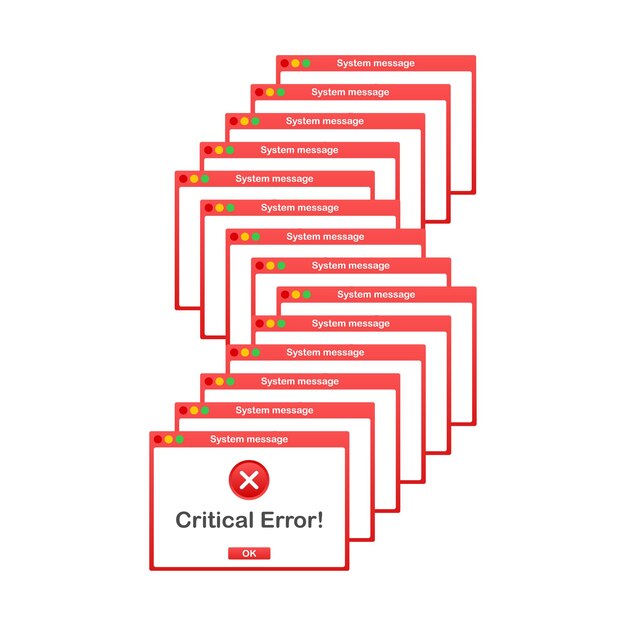Social Media Crisis Management: Step-by-Step Guide for US Brands 2025

Social media crisis management is crucial for US brands in 2025, requiring a proactive, step-by-step approach to identify, address, and mitigate potential reputational damage effectively, ensuring brand trust and customer loyalty.
In today’s digital landscape, a strong social media presence is vital for US brands. However, this also means being prepared for potential crises. This social media crisis management guide provides actionable steps for US brands to navigate and mitigate crises effectively in 2025, ensuring business continuity and preserving brand reputation.
Understanding the Landscape of Social Media Crises in 2025
The social media environment is constantly evolving, and in 2025, US brands face an increasingly complex array of potential crises. Understanding these potential pitfalls is the crucial first step to effective social media crisis management. A proactive approach ensures that brands can quickly identify and address any threat to their reputation.
So, what does the landscape of social media crises actually look like?
Common Types of Social Media Crises
Several types of crises can emerge on social media. These range from customer service failures to public relations disasters. Preparing for each type helps mitigate potential damage.
- Customer Service Failures: Mishandling customer complaints, leading to widespread negative feedback.
- Public Relations Disasters: Controversial statements or actions by company representatives causing public outrage.
- Product Recalls: Announcing recalls and managing customer concerns through social channels.
- Data Breaches: Communicating about data breaches and addressing privacy concerns.

The Impact of Rapid Information Spread
The speed at which information spreads on social media can quickly escalate a minor issue into a full-blown crisis. Brands must monitor channels continuously and respond quickly to prevent misinformation. Social media’s viral nature often amplifies any issue, thus response becomes even more paramount.
In conclusion, preparing for social media crises in 2025 requires a solid understanding of the types of crises that can occur and the speed at which they can spread. By building a proactive strategy, US brands can protect their reputation and maintain customer trust.
Step 1: Develop a Social Media Crisis Management Plan
Creating a well-defined social media crisis management plan is essential for US brands. This plan serves as a roadmap for handling crises, ensuring a swift and effective response. A crisis communication strategy should be clearly documented and easily accessible.
The steps for developing a strong plan include:
First, define the parameters
Define Crisis Parameters
Clearly define what constitutes a social media crisis. This helps in differentiating between minor issues and major threats. A comprehensive definition ensures that resources are allocated appropriately.
Identify a Crisis Management Team
Assemble a dedicated team responsible for managing crises. This team should include members from marketing, public relations, legal, and customer service. Every member of this team must be versed in the plan and understand their expectations.
- Roles and Responsibilities: Assign clear roles and responsibilities to each team member.
- Communication Protocols: Establish communication channels and protocols for internal and external communications.
- Escalation Procedures: Define when and how issues should be escalated to senior management.

To conclude, developing a social media crisis management plan is a proactive step that prepares US brands for the inevitable challenges of the digital world. By defining crisis parameters, identifying a capable team, and creating protocols, brands can navigate crises more effectively.
Step 2: Monitor Social Media Channels Continuously
Continuous monitoring of social media channels is crucial for identifying potential crises. By tracking brand mentions, sentiment, and emerging issues, US brands can detect and address problems early. This proactive monitoring prevents minor issues from escalating into major crises.
Tools and techniques for monitoring include:
Utilize Social Listening Tools
Implement social listening tools to track brand mentions and analyze sentiment. These tools help to identify trending topics and potential issues in real-time. Social listening provides insights into what customers are saying about the brand and its competitors.
Set Up Alerts and Notifications
Configure alerts to notify the crisis management team of unusual activity or negative sentiment spikes. Timely alerts ensure that the team is aware of potential crises as they emerge. These also can include keyword alerts.
Continuous monitoring of Social Media Channels involves consistent attention and adaptation to the ever-changing digital environment. By using the appropriate tools and techniques, US brands can maintain a proactive stance and protect themselves from potential crises.
Step 3: Assess the Situation and Determine Severity
When a potential crisis is identified, the next step is to assess the situation and determine its severity. Accurate assessment is critical for determining the appropriate response level. Understanding the nature and scope of the issue enables brands to tailor their response effectively.
The key elements of assessment include:
Analyze the Nature of the Crisis
Evaluate the type of crisis (e.g., customer service failure, PR disaster) to understand its potential impact. A clear understanding of the crisis type helps in formulating the right strategy. It also enables the team to assign the correct priorities.
Evaluate the Scope and Impact
Determine the extent of the crisis and its potential impact on the brand’s reputation. Consider factors such as the reach of the posts, the sentiment of the comments, and the potential for media coverage.
- Reach of Posts: How many people have seen the initial posts or comments?
- Sentiment Analysis: What is the overall sentiment of the comments (positive, negative, neutral)?
- Potential Media Coverage: Is the issue likely to attract media attention?
Assessing the severity and impact of a social media crisis is essential for ensuring that the response is proportional and efficient. By analyzing the nature of the crisis and evaluating how it might affect the brand’s reputation, US brands can tailor their strategy, thus minimizing damage.
Step 4: Implement the Crisis Communication Strategy
Implementing the crisis communication strategy involves taking decisive action to address the social media crisis. This stage is critical for controlling the narrative and mitigating potential damage. A well-executed strategy can restore trust.
Components of implementing the comms strategy involve:
Activate the Crisis Response Team
Convene the crisis response team and initiate communication protocols. Ensure everyone understands their roles and responsibilities. Every member of the team needs to play an active role in resolving the crisis. This ensures that the approach is both efficient and consistent.
Craft a Holding Statement
Prepare and release an initial statement acknowledging the issue and expressing commitment to resolve it. A holding statement shows that the brand is aware of the crisis and is taking it seriously.
In summary, implementing the communication strategy requires decisive action and clear communication. A well-coordinated response can help US brands not just contain crises but also show stakeholders their commitment to accountability.
Step 5: Engage and Communicate Transparently
Engaging with the public and communicating transparently are essential for managing a social media crisis. Honest and open communication can help to rebuild trust and prevent further escalation. Responding to concerns promptly demonstrates the brand’s responsibility and commitment.
Approaches to improve engagement and transparency:
Respond to Comments and Inquiries
Address comments and inquiries promptly, providing accurate and helpful information. Ignoring comments can exacerbate the situation and make the brand appear indifferent. Actively participating in conversations helps reduce negative sentiment.
Provide Regular Updates
Share regular updates on the progress being made to resolve the crisis. Keeping the public informed helps them understand that the brand is working diligently. Consistent updates can reduce the spread of misinformation and rumors.
The transparency will ultimately benefit the brand in the long run. US brands will find themselves able to demonstrate their honesty and reliability, rebuilding credibility amid a problem.
Step 6: Evaluate and Learn From the Crisis
After a social media crisis has been resolved, it is important to evaluate the response and learn from the experience. A thorough review helps identify strengths and weaknesses in the crisis management plan. Implementing improvements ensures better preparedness for future events. The more you learn, the better you adapt to new problems.
Ways to evaluate what you’ve done include:
Conduct a Post-Crisis Review
Organize a meeting with the crisis management team to review the handling of the crisis. Discuss what worked well and what could have been done better. A detailed review can uncover valuable insights for refining the crisis management process. It’s important to ensure the approach is consistent.
Update the Crisis Management Plan
Incorporate the lessons learned into the crisis management plan. Update protocols, communication strategies, and training materials. Keeping the plan updated ensures that the brand remains prepared for future crises. Brands that don’t update risk being stuck in outdated and inefficient practices.
| Key Point | Brief Description |
|---|---|
| 🛠️ Develop a Plan | Create a detailed crisis management strategy. |
| 👂 Continuous Monitoring | Track social media channels for potential crises. |
| 📢 Transparent Communication | Communicate openly to maintain trust. |
| 📚 Post-Crisis Review | Evaluate response and update plan for future crises. |
FAQ
▼
Social media crisis management is the process of identifying, managing, and resolving negative situations that can harm a brand’s reputation online. It involves proactive strategies and quick responses.
▼
A well-defined plan is essential for a swift and effective reaction. It ensures that the team understands their duties and the communication protocols while also helping maintain a consistent approach.
▼
Social media channels should be monitored continuously to identify potential crises in real-time. Consistent monitoring allows you to address small complaints before they become significant incidents.
▼
A holding statement should acknowledge the issue and show commitment to resolving it. It should also provide a timeline for updates and demonstrate empathy. It shows you understand the problem and have a plan with your stakeholders.
▼
It should include a review of what worked and what could have been improved. The evaluation process ensures the crisis management plan is up to date and the brand is ready for future crises.
Conclusion
Effective social media crisis management is a critical component of maintaining your brand reputation and stakeholder trust as a US brand. By developing a proactive plan, constantly monitoring social media channels, communicating honestly, and learning from each event, brands may successfully overcome difficulties and emerge stronger. As we go into 2025, these measures will be critical for managing the ever-changing social media environment.





